If you’re a yoga enthusiast or a beginner, you can’t ignore the importance of a yoga mat. Let’s explore how to choose the right yoga mat for your practice.
1 How to Choose a Yoga Mat
Size, Thickness, and Weight
When it comes to size, an ideal yoga mat should be longer than your body length. Additionally, the width should be wider than your shoulders. Standard yoga mats typically measure 61cm in width and 173-183cm in length. However, some well-known brands offer yoga mats with custom sizes.
Yoga mats usually range in thickness from 4mm to 8mm. Thicker mats provide better support and help prevent injuries. However, thicker mats may compromise your balance.
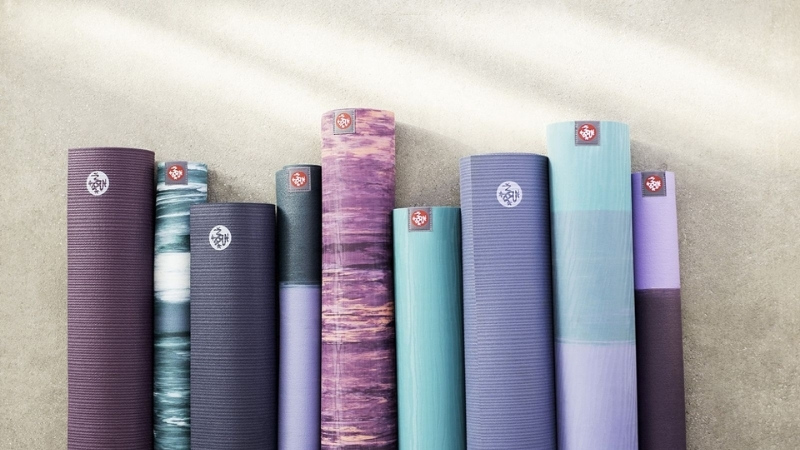 Size, thickness, and weight of the mat
Size, thickness, and weight of the mat
Yoga mats vary in weight from 600g to 1.2kg. The weight depends on the brand and material used. If you’re a beginner, opt for a lighter mat for easier maneuverability.
Grip and Slip Resistance
A good yoga mat should offer excellent grip and slip resistance. To test this, place the mat on a flat surface, press your hands down, and push the mat forward. If the mat doesn’t move, it indicates superior grip and slip resistance, making it ideal for yoga practice.
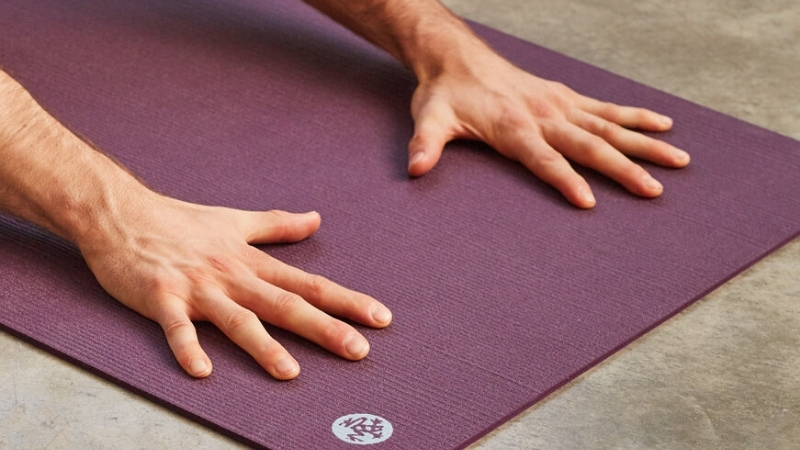 Grip and slip resistance are crucial
Grip and slip resistance are crucial
Mat Rebound
The rebound of a yoga mat is essential. A mat that’s too hard can cause injuries, while an overly soft and thin mat can be uncomfortable. To test the rebound, use two fingers to press down on the mat and release, ensuring it provides a comfortable level of rebound.
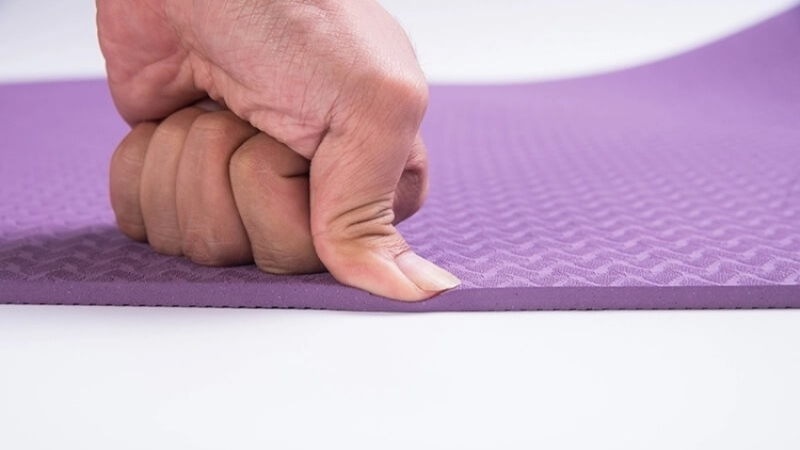 Rebound of the yoga mat
Rebound of the yoga mat
Alignment Lines
Yoga mats for beginners often feature alignment lines. These lines help beginners position their hands and feet accurately and maintain proper form. This prevents injuries from incorrect postures and saves time spent on distance estimation.
 Alignment lines
Alignment lines
Material
The material is a key consideration when choosing a yoga mat. It affects the durability and longevity of the product. Here are some common materials used in yoga mats:
- PVC: Polyvinyl Chloride (PVC) is a common and affordable material. However, it has a strong plastic smell, which can interfere with your breathing during yoga practice.
- TPE: Thermoplastic Elastomers (TPE) offer excellent durability, rebound, and stretchability. TPE mats are easy to carry and move, and they are also waterproof, making them easier to clean.
- Natural Rubber and PU: These materials are of premium quality and often used by renowned brands. They offer superior grip and rebound. However, they tend to be more expensive than other options.
 Different materials used in yoga mats
Different materials used in yoga mats
Brand
Opting for a yoga mat from a reputable brand ensures quality and peace of mind. Some well-known brands in the market include Liforme (UK), Jade (USA), beyoga (Taiwan), Manduka (USA), Lululemon (Canada), and Gaiam (USA)…
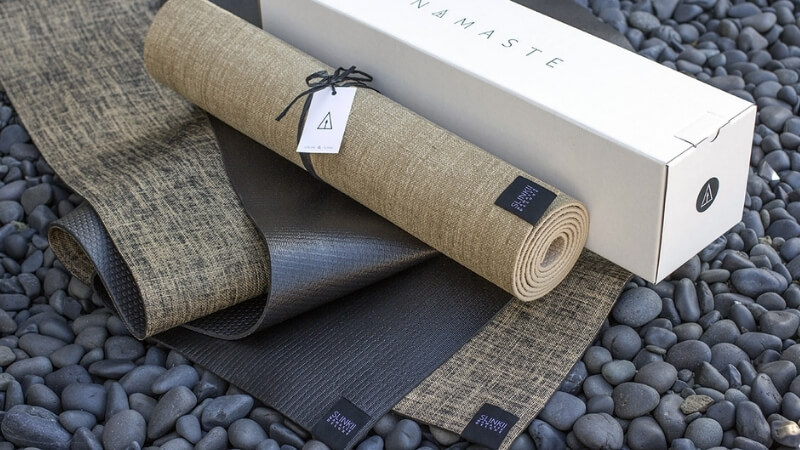 Choosing a branded mat ensures quality
Choosing a branded mat ensures quality
2 Frequently Asked Questions When Choosing a Yoga Mat
What Type of Mat Should I Buy as a Beginner?
- Purpose: If you plan to practice at home, go for a thicker mat. For studio practices, opt for a thinner, more portable mat.
- Yoga Style: For gentle yoga styles like Hatha or Yin, any mat will do. For more intense styles like Ashtanga or Vinyasa, choose a thicker, more resilient mat with superior rebound and easy cleaning.
- Body Condition: If you have joint issues, opt for a thicker, softer mat. If you tend to sweat a lot, choose a mat with excellent grip, even when wet.
 Type of mat for beginners
Type of mat for beginners
How to Roll a Yoga Mat Properly?
Properly rolling your yoga mat ensures it lies flat during your next practice. Always roll with the top surface facing outwards and the bottom surface, which touches the floor, facing inwards. Avoid creating sharp creases as they can damage the mat over time.
 Proper way to roll a yoga mat
Proper way to roll a yoga mat
How to Clean and Care for Your Yoga Mat?
Each yoga mat comes with care and cleaning instructions. Since different materials require different care, follow the instructions provided by the manufacturer. Use a specialized cleaning solution suitable for your mat’s material.
If a specialized cleaner is not available, use a damp cloth to wipe down the mat. If you tend to sweat a lot, wipe down the mat after each practice to prevent premature deterioration. Avoid machine washing or soaking the mat in water.
After cleaning, air-dry your mat in a well-ventilated area. Do not expose it to direct sunlight. Avoid drying rubber or processed rubber mats with a hairdryer or similar device.
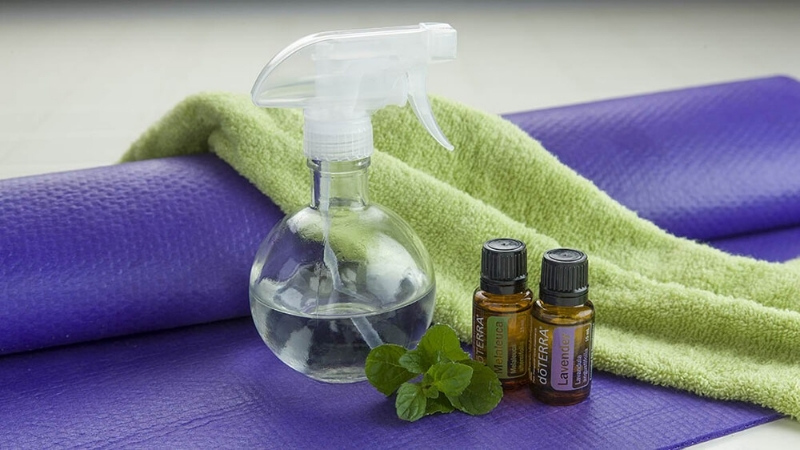 Cleaning and caring for your yoga mat
Cleaning and caring for your yoga mat
How to Identify the Top Side of a Yoga Mat?
The top side of a yoga mat typically features the brand logo and alignment lines. The logo is usually placed at the corners or center of the mat. Some mats also include manufacturing information and size details, helping you choose the right size for your practice.
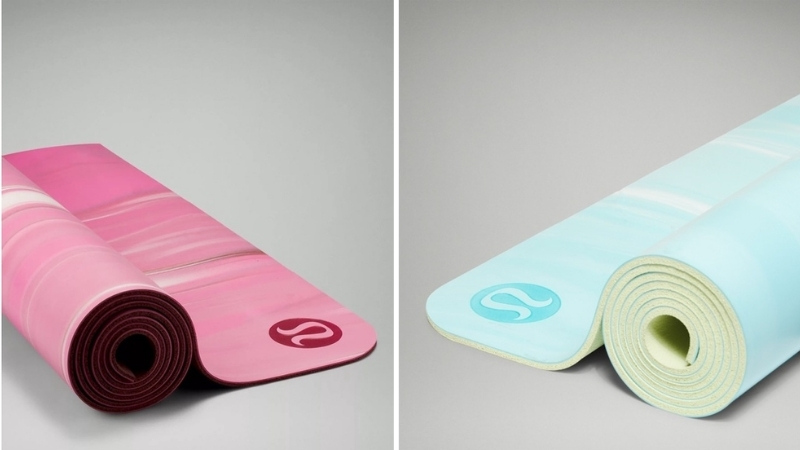 Identifying the top side of a yoga mat
Identifying the top side of a yoga mat
We hope this guide on yoga mat sizes and selection criteria has been helpful. Now you can choose the perfect yoga mat for your practice with confidence.
Choosing the Right Size Kitchen Island
Are you looking to maximize your kitchen space? A kitchen island might be the perfect solution! But what exactly is a kitchen island and how can you choose the right size for your kitchen? In this article, we’ll delve into the basics of kitchen islands and explore the optimal size for maximum efficiency.






































